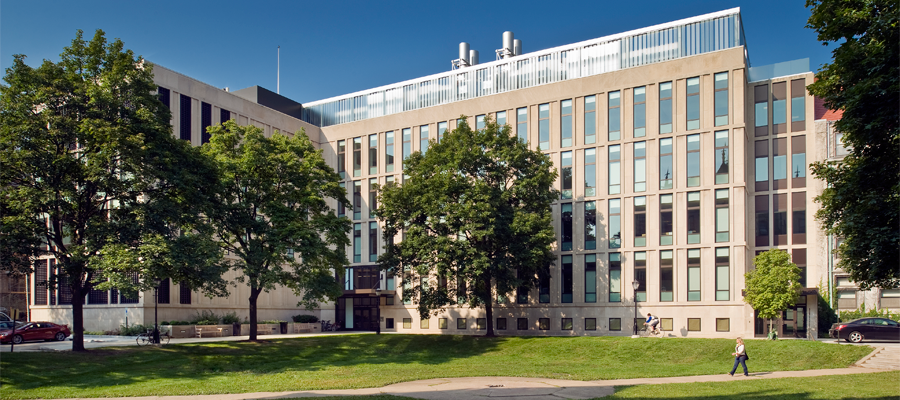The computational model, developed by researchers in the Department of Chemistry under the direction of Haig P. Papazian Distinguished Service Professor Dr. Gregory Voth, will be used to develop drugs and track mutations to fight the virus.
The model has the potential to elucidate the mechanism in which healthy human cells are invaded by SARS-COV-2, the virus responsible for COVID-19. “The model can help us understand how the virus fuses with our cells. After you breathe the virus in, spike proteins on the virus bind to ACE-2 receptors on cells in the respiratory tract,” Voth said. “This is the first key step, the infection step.”
Voth’s team created the model using a technique called coarse-graining. “The technique is called coarse-graining because an object like a virus has billions of atoms. Trying to solve that directly would be very difficult. This coarse-grained technique takes all of that complexity and folds it into simpler representations that still retain the essential properties,” Voth said. His lab has been at the forefront of developing coarse-graining methods and applying them to a range of applications.
Insights from the model could be a boon for vaccine development, especially when it comes to fighting new mutations of the virus. Vaccines are designed to help the body’s immune system recognize spike proteins on the surface of the virus and attack it. However, certain mutants of the virus may be resistant, and will still be able to reproduce and multiply. Voth noted that the high rates of COVID-19 infection worldwide have given the virus more opportunities to mutate.
“In the new UK variant of the virus, certain amino acids were changed so the spike proteins are able to stick more strongly. In principle, we could model that on the computer to better understand it, and do the same for future mutations,” Voth said. He hopes that the computational model will help scientists stay ahead of the curve when it comes to new strains of the virus.
The report was published in Biophysical Journal, and the model itself is available to the public to download. Voth believes that making the model widely accessible is crucial. “We wanted to provide this platform where people can download the model and improve it and add new data. Hopefully they also share their work so it can be a resource for others.”









